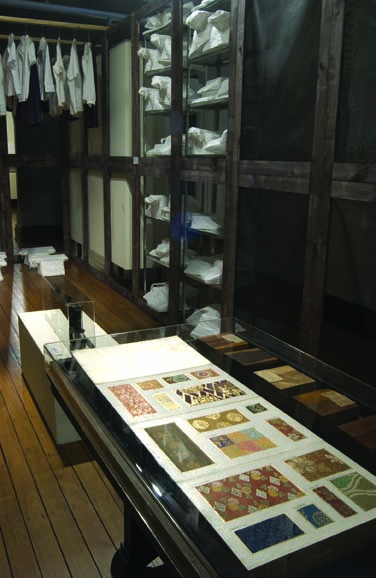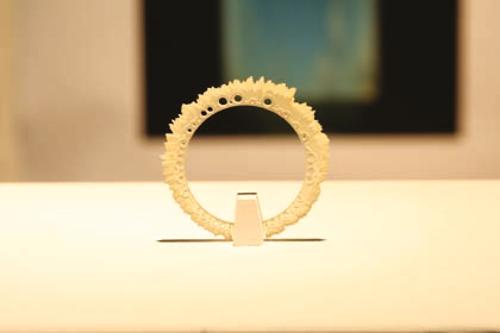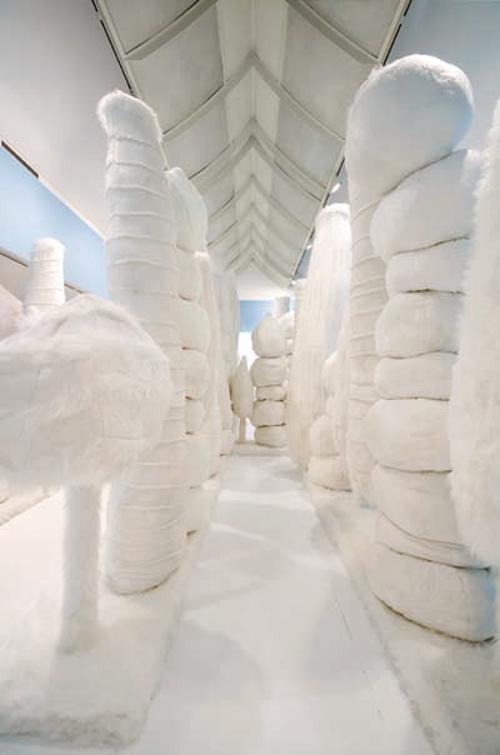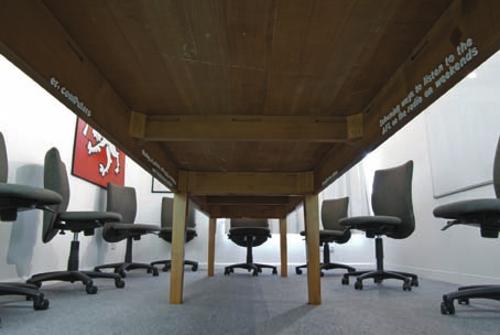
The street view of the very new, and very swish, Maitland Regional Art Gallery shows modern architecture bursting out of the side of the old West Maitland Technical College - an aggressively angular modernist newcomer showing scant sympathy to fin de siècle red brick. Inside however, there is harmony as grand old classrooms are given a fresh life as quirky exhibition spaces. The largest space holds Fiona Davies' Intangible Collection installed in the same space that housed the original gallery when the building was first diverted from teaching trades to exhibiting art.
The result of Davies’ efforts is a multi-layered series of narratives, and an exhibition to engage the whole of the Hunter Valley community, an evocation of the past housed within the reassuring solidity of dark red brick. These stories provide a marked contrast to the stark white of the new spaces. The many visitors from the big city (and other states) who came to celebrate the opening of this long-fought-for art gallery may have been more impressed with the grand modern exhibition galleries, but the success of any regional arts organisation depends on its ability to woo the locals. In the case of Maitland Regional Art Gallery it must engage with the former students of Maitland West Technical College, their children, their grandchildren, their cousins and their aunts. Davies has created an exhibition that speaks to the culture of the tradies; the men in the now defunct textiles factories, the girls in the typing pool and the dressmakers who can take a picture from The Women’s Weekly and turn it into a dress for a debutante. It is a tribute to both the craft and the ingenuity of the artisan classes that are the backbone of the Maitland community. By foregrounding Davies’ exhibition Maitland Regional Art Gallery is keeping faith with those that fund it, and at the same time is enticing them into the gallery where they can find other pleasures.
The ethos that is so honoured here was a part of the early 20th century national program to train tradespeople, to create standards, to celebrate excellence. Which is why the original West Maitland Technical College had its own museum - a place where exemplary work could be seen by the budding tradesmen (and women) of the Hunter Valley. When the purpose of the building changed to become a modern exhibiting gallery, the old museum collection was sent down to the Museum of Applied Arts and Sciences (now the Powerhouse Museum) in Sydney, where the objects languished in storage. The new Art Gallery has resurrected the old museum space, and in it Davies has both rescued some of the items from the original museum, and created a loving installation in honour of trade students past.
The old timber and glass display cases have been resurrected and filled with the products of different trades. There are hats with flowers, netting and bias-cut taffeta leaves from the millinery class; artificial flowers, paper patterns and completed dresses, all hanging in a row. A case of stuffed birds includes a pink and grey galah, a tribute to the efforts of a budding taxidermist. The furnishing trades are represented by samples of stencil patterns and stains for timber.
Coalmining, the life-blood of the old Hunter. is represented by a row of miners’ lamps and a Davy lamp. But, in the later years at least, many of the students here were women and it is their experiences that serve as a springboard for Davies’ interpretation. Banks of white cotton simulated "typewriters" are “stored” on shelves echoing the original heavy machines, also on display. There is a well-placed contrast between these ghost typewriters, the racks of crisp white “ghost” shirts and the multicoloured multi-textured original items. Davies has added archival ephemera, including assignments, a student’s school bag, a worn ruler, and photographs to recreate the ambience of the not-too-distant past. She has also modified elements of old designs, to create a background montage of images evoking the work undertaken by those students so many years ago. This evocation of times past is rounded off with oral histories collected from many of those who completed their education here. The final result is that the viewer feels they are entering a ghost world, where fragments of the past remain to haunt the present.












